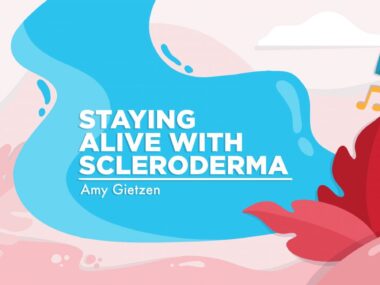4 Ways I Bargain Hunt for Better Prescription Drug Prices
Written by |

At the start of the year, I received a call from my local pharmacy. The lovely employee told me she was giving me a courtesy call because my prescriptions were very expensive. I figured she was referring to the fact that I hadn’t met my deductible yet. But then she whacked me in the head with the price: “Ma’am, two of your medications are over $2,000!”
I immediately jumped to the conclusion that something was clerically wrong. The total for all my medications has never been over $1,000, and I was now being asked to pay over five times that much! The patient woman stayed on the phone with me while she double-checked all the usual issues — it ran as a brand name instead of generic, it didn’t get processed by the insurance company, or the prescription needed a new authorization.
Not this time. Everything checked out OK, and it was my responsibility to pay an exuberant amount that would only get me through the next 30 days. I began to panic. There was no way we could afford this, even though these tiny pills literally keep my body from spinning out of control faster than a fighter jet being shot down. How would I live?
As if a bucket of cold water had been dumped over my head, I quickly snapped back to reality. I remembered this was just a new challenge — just a part of the difficult, chronically ill life I live. It was time to demonstrate my professional skills as a medication bargain hunter.
Following are the steps I take to lower my medication costs:
1. Call the insurance company.
Since I have private insurance through an employer, some medications qualify for an assistance program. But they don’t offer it unless I ask. I lowered one of my specialty medications, Actemra (tocilizumab), from $2,000 to $5 a month just by asking.
2. Check for discount cards through the manufacturer.
I found that most of my medications offer discounts if I apply for a special card on their websites. All I need to do is fill out a short questionnaire about why I take the medicine. After answering a few yes or no questions, a magical card appears on my screen. I then call my pharmacy and tell them I want to add it to my file and use it on my prescription.
These types of cards have helped cover almost all the costs associated with my Dexilant (dexlansoprazole) and CellCept (mycophenolate mofetil) prescriptions. But it’s important to know that these discounts only work on brand-name drugs. I have to remind the pharmacy to make sure they are filling the brand-name medications only. And on rare occasions, my doctor has to write a prescription for the brand name specifically.
Yes, it’s a frustrating hassle, but it’s worth it when it saves us thousands of dollars each year.
3. Find a discount website.
Another magical resource is the GoodRx website, which offers incredible coupons for most medications. After entering in the prescription name and dosage, it generates a list of coupons to use at different pharmacies. These can be printed out like old-fashioned coupons or saved to a smartphone. I typically screenshot mine onto my phone and hold it up for the pharmacist to see.
In 2015, my insurance company’s contract didn’t cover sildenafil to control Raynaud’s phenomenon. It’s over $1,000 a month without a coupon, but only $30 with it.
Sometimes these coupons are for fewer pills than what is written on the prescription. For example, the coupon covers 60 pills, but I need 120. Luckily, the remaining pills get prorated for the discounted price, too. Knowledge is power!
4. Get the doctor involved.
Having a rare disease can sometimes mean the medications I take aren’t designed to treat my ailments. That means the insurance company can’t justify why I’m taking it, which is a common reason it declines coverage. But I’ve learned that this just means the company needs more information from the doctor.
It’s rarely easy, but with persistence, I’m able to get my doctors to jump through the hoops my insurance company requires of them. They fill out detailed forms, and like a magic wand, the prescription is on its way to my belly.
Be prepared to start all over again.
Throughout the years, I’ve learned to count on the price of my prescriptions fluctuating as frequently as the color of my hands on a cold day. Insurance coverage and pharmacy prices change. Coupons and discount cards expire without notice. That’s why I always make sure I refill prescriptions before they run out.
I never know when I’ll have obstacles to overcome just so I can afford my life-saving medications. Being prepared buys me the time to find what I call the bargains that keep me alive.
Note: Scleroderma News is strictly a news and information website about the disease. It does not provide medical advice, diagnosis, or treatment. This content is not intended to be a substitute for professional medical advice, diagnosis, or treatment. Always seek the advice of your physician or other qualified health provider with any questions you may have regarding a medical condition. Never disregard professional medical advice or delay in seeking it because of something you have read on this website. The opinions expressed in this column are not those of Scleroderma News or its parent company, Bionews, and are intended to spark discussion about issues pertaining to scleroderma.






Leave a comment
Fill in the required fields to post. Your email address will not be published.